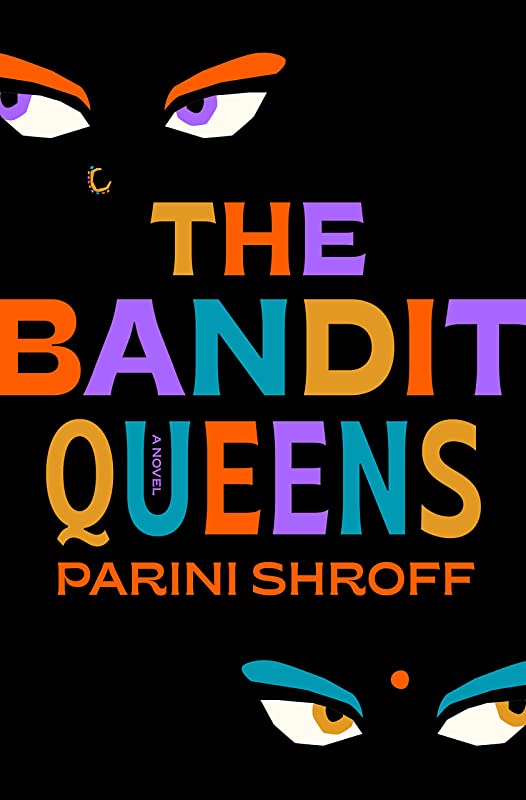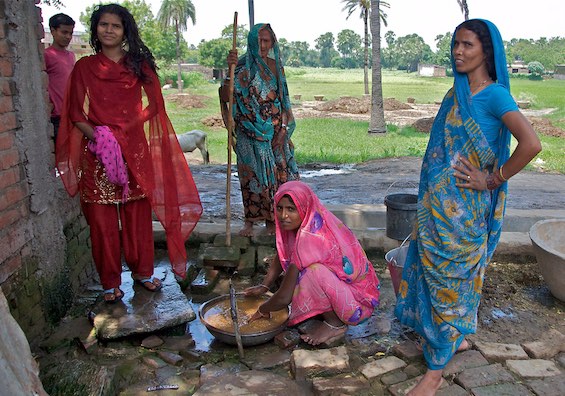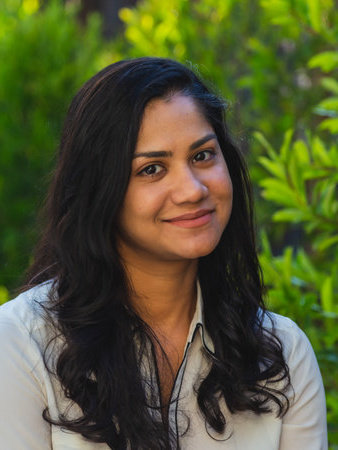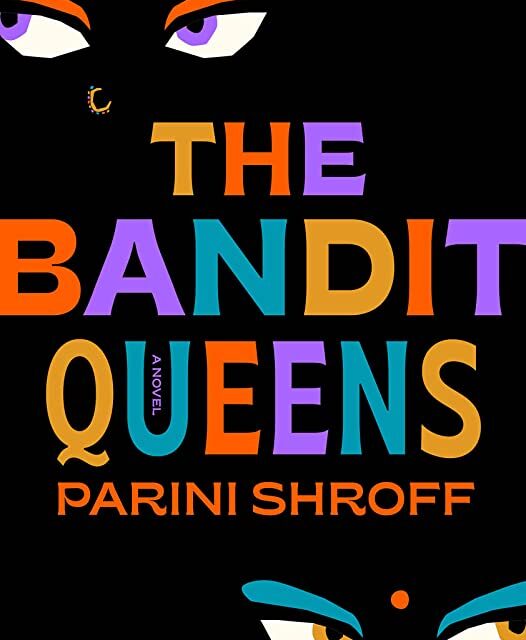
You’re not likely to find yourself laughing out loud in a typical story about murder. Oh, there are those authors who set out to write crime novels with a smile or a chuckle on every page. Carl Hiaasen or Janet Evanovich, for example. But Parini Shroff doesn’t write like that. Though her debut novel, The Bandit Queens, is hilarious, it’s only intermittently so. Because in the space of 350 pages she manages to address the enduring ills of life in an Indian village today. Poverty. Alcoholism. Endemic domestic violence. The profound injustice of the caste system. And superstitious fantasies as vicious and nonsensical as the most over-the-top American conspiracy theories. But above all The Bandit Queens is a story about the oppression of women.
Estimated reading time: 6 minutes
Five village women dominate this story
The setting is a rural village in North India not far from the country’s capital, New Delhi. Shroff’s story centers on the five women in a microcredit loan group, four of them Hindu, one Muslim. The protagonist, Geeta, is regarded as a widow because the others, and everyone else in the village, believe she killed her husband when he disappeared five years ago. Most fear her, believing she is a monster with evil in her heart. And Geeta has responded by withdrawing from most contact with others. So, when Farah, the Muslim member of the loan group, fails to turn up with her two hundred rupees for her weekly payment, the others force Geeta to come up with the difference. Her only recourse to recover the money is to extract it somehow from Farah. And she knows that’s unlikely ever to happen.
The Bandit Queens by Parini Shroff (2023) 352 pages ★★★★★

A hilarious tale with a grim foundation
Farah’s life is hell. Her husband doesn’t just drink up every rupee he can lay his hands on but beats her and the children as well. Of course, Geeta knows this. Everyone in the village knows it, as they know (or think they know) everything about everyone else who lives there. So, it’s a surprise but no shock when Farah turns up at Geeta’s home asking her for a “small favor.” Since Geeta murdered her husband, she obviously knows how to kill someone. And Farah wants her to kill the mean drunk who’s making her and her children miserable.
Geeta has been unable to persuade anyone that she did not kill her husband. and she knows it’s futile to make the argument again with Farah. So, reluctantly, she agrees to help Farah. But Farah herself must do the deed. Thus, the two set out on a comic quest to find the means to commit a perfect murder. Laughs ensue. A lot of laughs. Eventually, however, Farah pulls it off. And that’s just the first of a series of murders that take place over the ensuing months in this suspenseful and funny tale.
But reality intrudes in the story. Harsh reality. Widespread alcoholism and domestic violence. Crippling superstitious fantasies that hobble the villagers’ lives. The multiple injustices of the caste system, still powerfully in force in this village despite laws that are meant to stop it. And, throughout, we witness the way misogyny hangs like a pall over the community, keeping women subject to the whims and crimes of their husbands and preventing them from obtaining the education that might help them gain a measure of freedom.
Putting Indian villages in perspective
In Europe and the United States, most of us think of a village as a tiny settlement with a population of a few hundred people at best. If the population is much larger, it’s a town, not a village. Not so in India. Of that country’s 664,000 villages, some 4,000 have a population of more than 10,000. Only 236,000, or about one-third, have fewer than 500 residents. The village depicted in this novel appears to be among the majority that houses between 500 and 10,000 people.
For most American readers, too, an Indian village will seem not just an exotic, faraway place but one of little consequence. Not so. Although a majority of people (56 percent) worldwide now reside in cities, about two-thirds of India’s population of 1.4 billion still lives in villages today. That’s more than 900 million people—nearly three times the population of the United States and almost one out of every eleven people on Earth. The world’s 3.5 billion people living in rural areas hold the key to the planet’s future. Because if their problems—ignorance, poverty, hunger, illness—aren’t solved, the climate crisis threatening the urban majority can’t be solved, either.
About the author

Parini Shroff is a graduate of Loyola Law School and received her MFA from the University of Texas at Austin. Her work has appeared in journals such as Southern Humanities Review, Salamander and MacGuffin, among others. She is a practicing attorney and currently lives in the San Francisco Bay Area. The Bandit Queens is her debut novel. She has never lived in an Indian village.
For related reading
This is one of The best books of 2023 so far.
I’ve reviewed several other great novels about life in India today, including:
- Serious Men by Manu Joseph (A comic novel about India today, and Big Science, too)
- A Burning by Megha Majumdar (Terrorism, corruption, and Hindu nationalism in India today)
- The Windfall by Diksha Basu (Sudden wealth, arranged marriages, and class envy in India today)
- Djinn Patrol on the Purple Line by Deepa Anappara (A deeply affecting tale of child trafficking in India today)
For information about all the excellent books I’ve reviewed about India, see Good books about India, past and present.
You might also enjoy my posts:
- Top 10 mystery and thriller series
- 20 excellent standalone mysteries and thrillers
- 30 outstanding detective series from around the world
- Top 20 suspenseful detective novels
- Top 10 historical mysteries and thrillers
And you can always find my most popular reviews, and the most recent ones, on the Home Page.



























